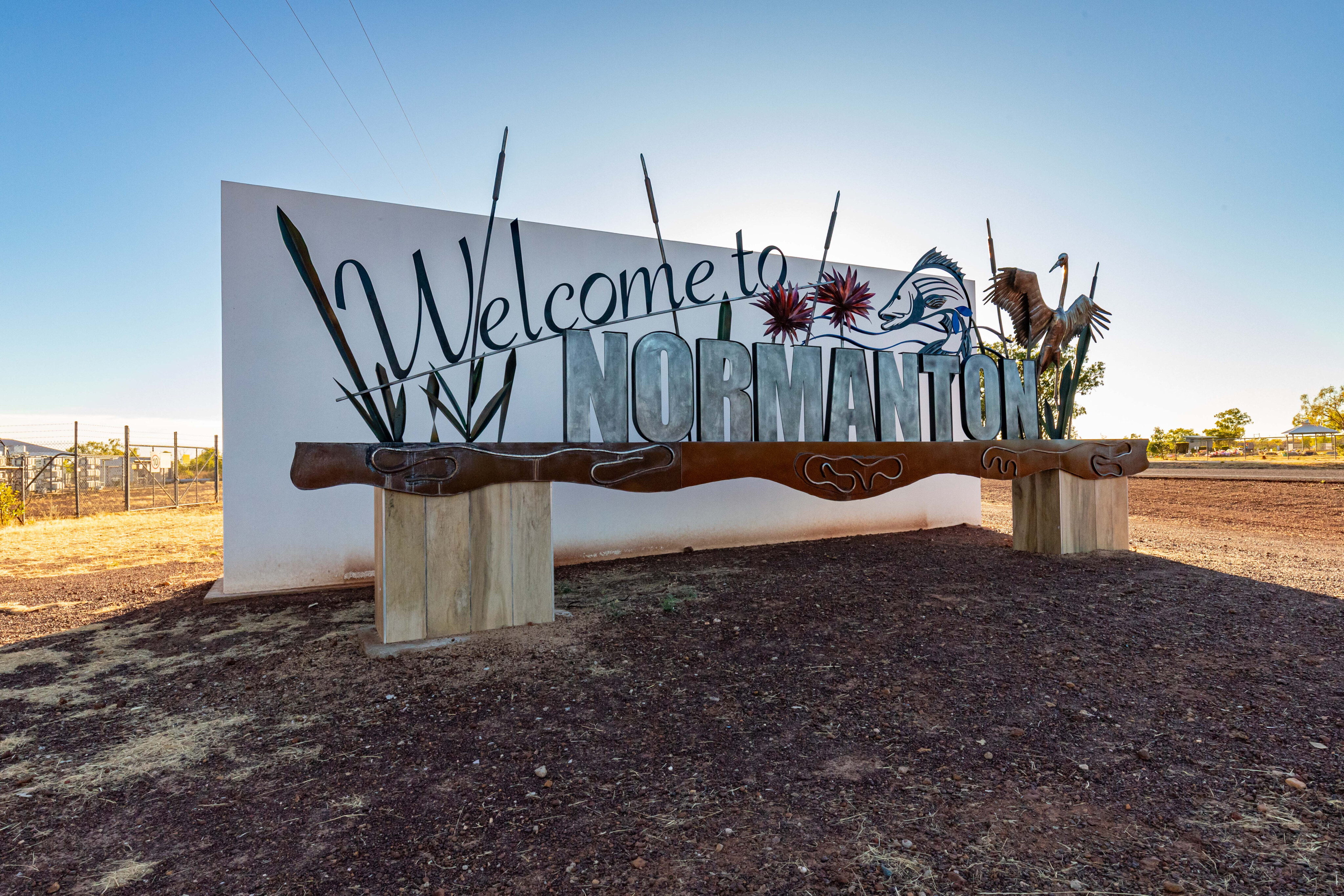
When you think of Gulf Country, the mind wanders to thoughts of dusty outback stations, rogue cattle, crocodiles and barramundi. The landscape is harsh and remote, yet it has been drawing in silver nomads for years who want to escape cold southern winters.
These days, the secret is out, and younger folk are now tackling the route from Cairns to Broome via the Savannah Way. Money has been thrown into the roads and what was once dirt is now bitumen, and what was once a single-lane of blacktop is now modern two-lane roads.
It is far easier to get to Normanton than it used to be and once there, it’s well worth spending a few days in the area so you can experience what this part of the country has to offer.

1. Normanton pub crawl
Picking which pub is the best in town can be a real challenge, so going on a pub crawl is the best way to work it out. There are only three pubs and they are all within a short walk of each other, so leave your rig back at camp.
The Purple Pub is the obvious starter, this historic hotel was once the Exchange Hotel in Croydon and was relocated to Normanton, morphing into the colourful building it now is over many years. The beer is cold and you’ll meet some interesting characters in the bar, but if you would prefer to sit outside, the beer garden pool room and bistro is located out the back.
The meals are typical pub fare and lunch is highly recommended. This is the only pub in town with gaming machines, TAB facilities and a drive-through liquor barn, while the pool competion is on Thursdays and Karaoke night is on Fridays.
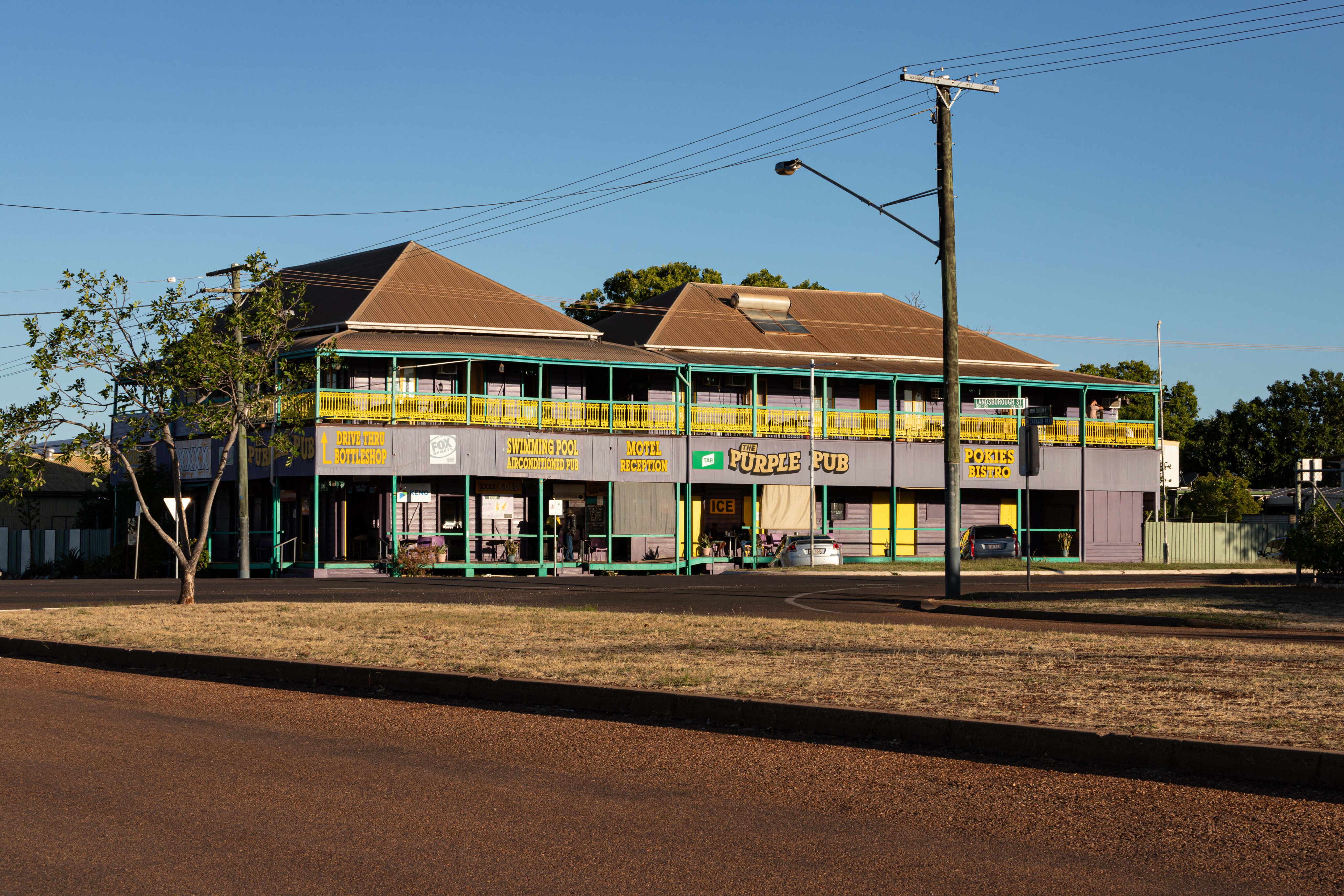
The Central Hotel also sells cold beer but is quieter during the day. Once the sun goes down, it is a different matter.
The food is restaurant quality, unexpected for such a remote town, and is enjoyed by many locals and travellers, so booking a table is recommended. The verandah is the perfect spot to watch the sunset while enjoying a top meal and cold beverage. The Central Hotel is closed on Sundays and Mondays but is open every other day for lunch and dinner.
The final pub is The Albion, which sports a good-sized deck that will please many. There is always a local or two sitting at the bar and the food is good too. When the afternoon breeze kicks in after a piping hot day, the Albion deck is the place to be with a schooner of icy-cold beer.
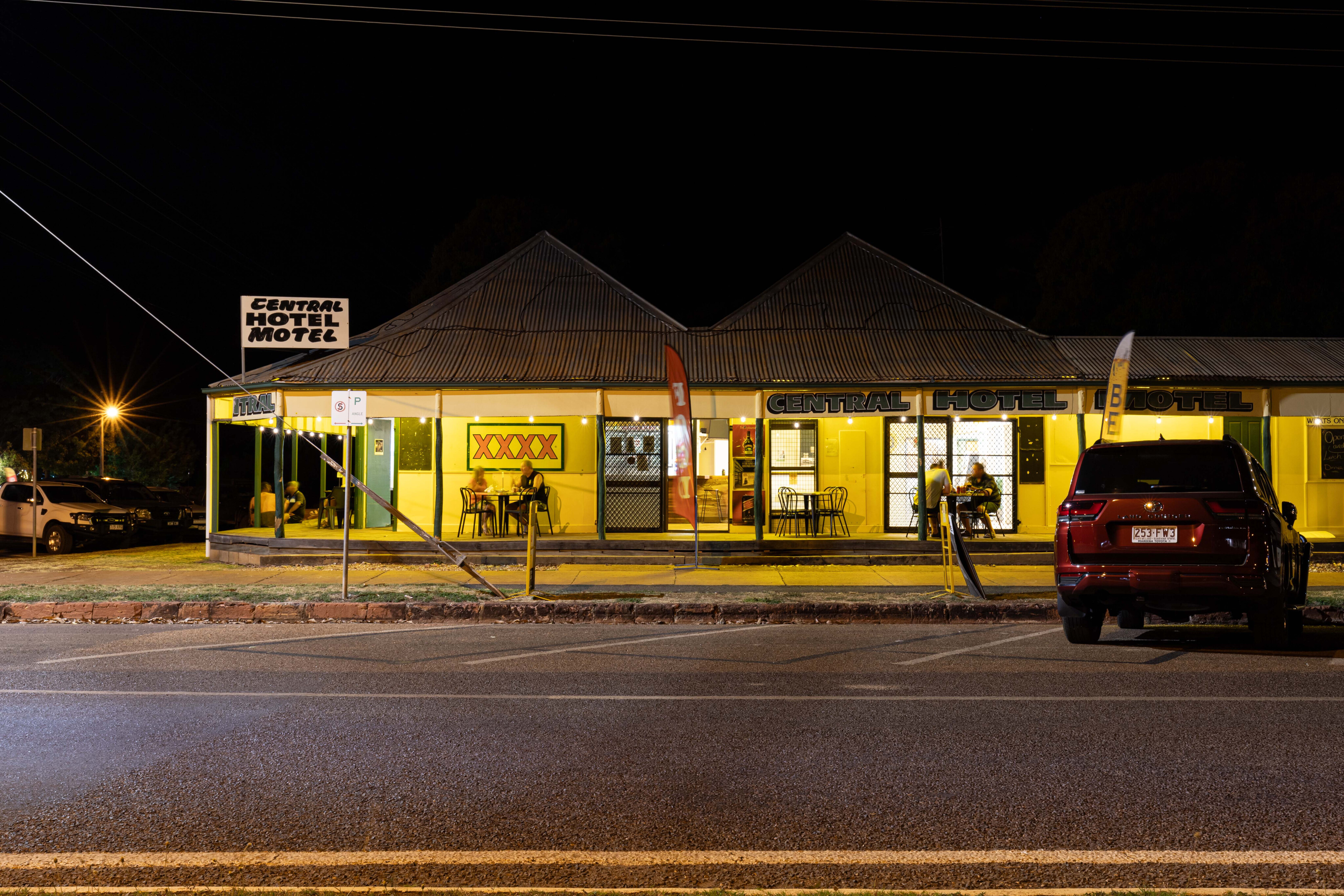
In the mornings, the Green Room Cafe opens early for breakfast, and makes the best coffee and pastries this side of the black stump.
Technically, there is a fourth pub that can be added to this list, but it is 70km away in Karumba. The Sunset Tavern is the prime sunset location in the Gulf, and it is often a challenge snagging a table, so get in early.
The meals are bang on and so are the beers, and when that golden orb begins to sink below the horizon, the cameras and phones all come out as everyone tries to capture that epic Instagram shot. If you do head up to Karumba to watch the sunset, once it starts getting dark the roadside is busy with wallabies and cane toads. The wallabies should be avoided.
If you’ve been to Normanton, let us know which you think is the best pub.
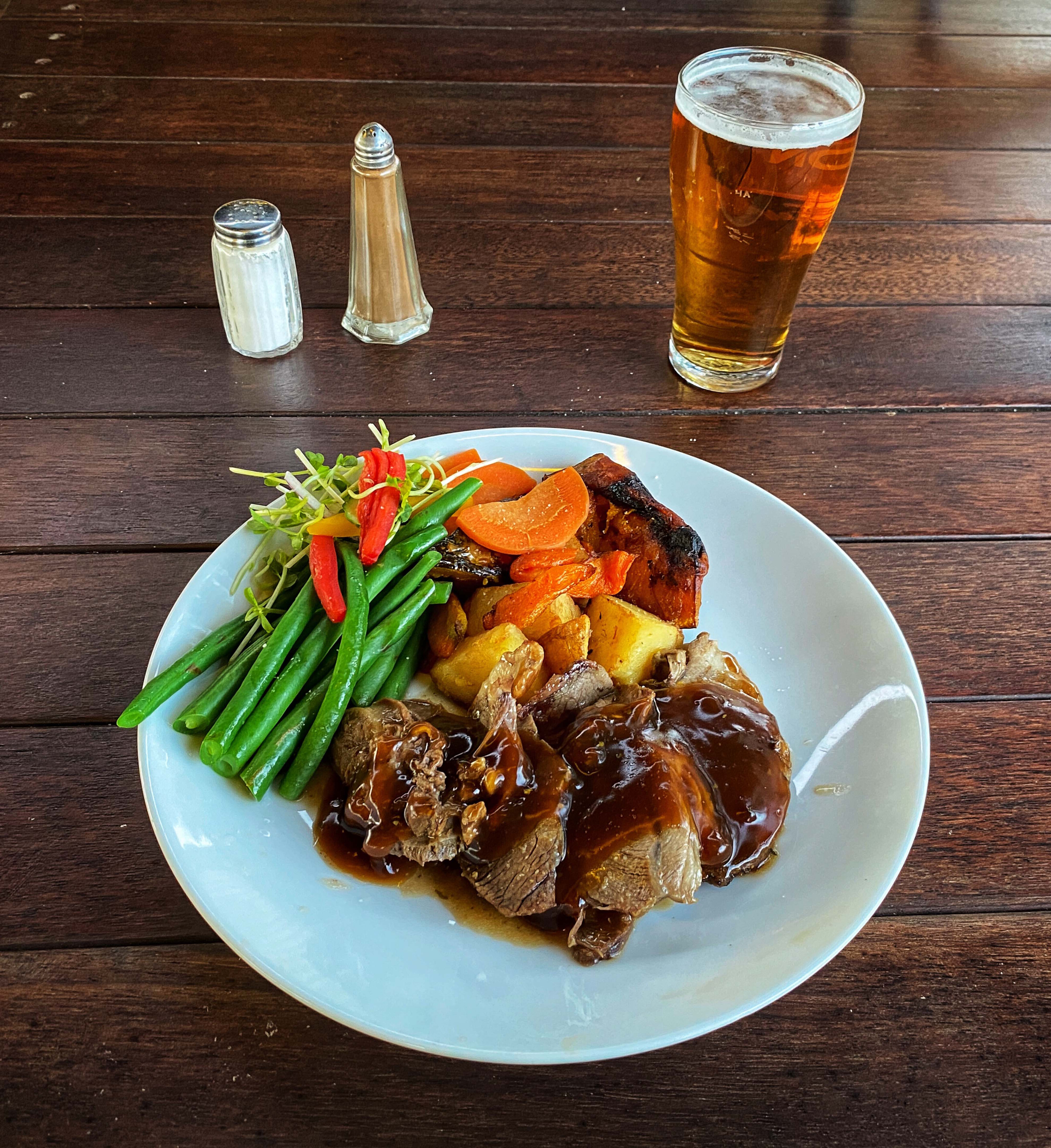
2. Ride the Gulflander
The idea of building a rail line from Normanton to Croydon was first developed in the 1880s to link the Port of Normanton with the copper fields in Cloncurry. When gold was discovered at Croydon, the decision was made to run the line from Normanton to Croydon, with construction starting in October 1887.
Wooden sleepers were no match for termites, so revolutionary steel sleepers were developed. The railway was laid on the surface of the ground with the sleepers packed with earth when they were laid to add weight and stability. The rails were bolted to the sleepers and no drains were dug or ballast used so that during the wet season floods, the water simply passed over the top of the rails.
The railway reached Blackbull on 15 December 1890 and Croydon on 20 July 1891. The sleepers have shown their usefulness for more than a hundred years and the line has carried steam trains and later railmotors over that time.
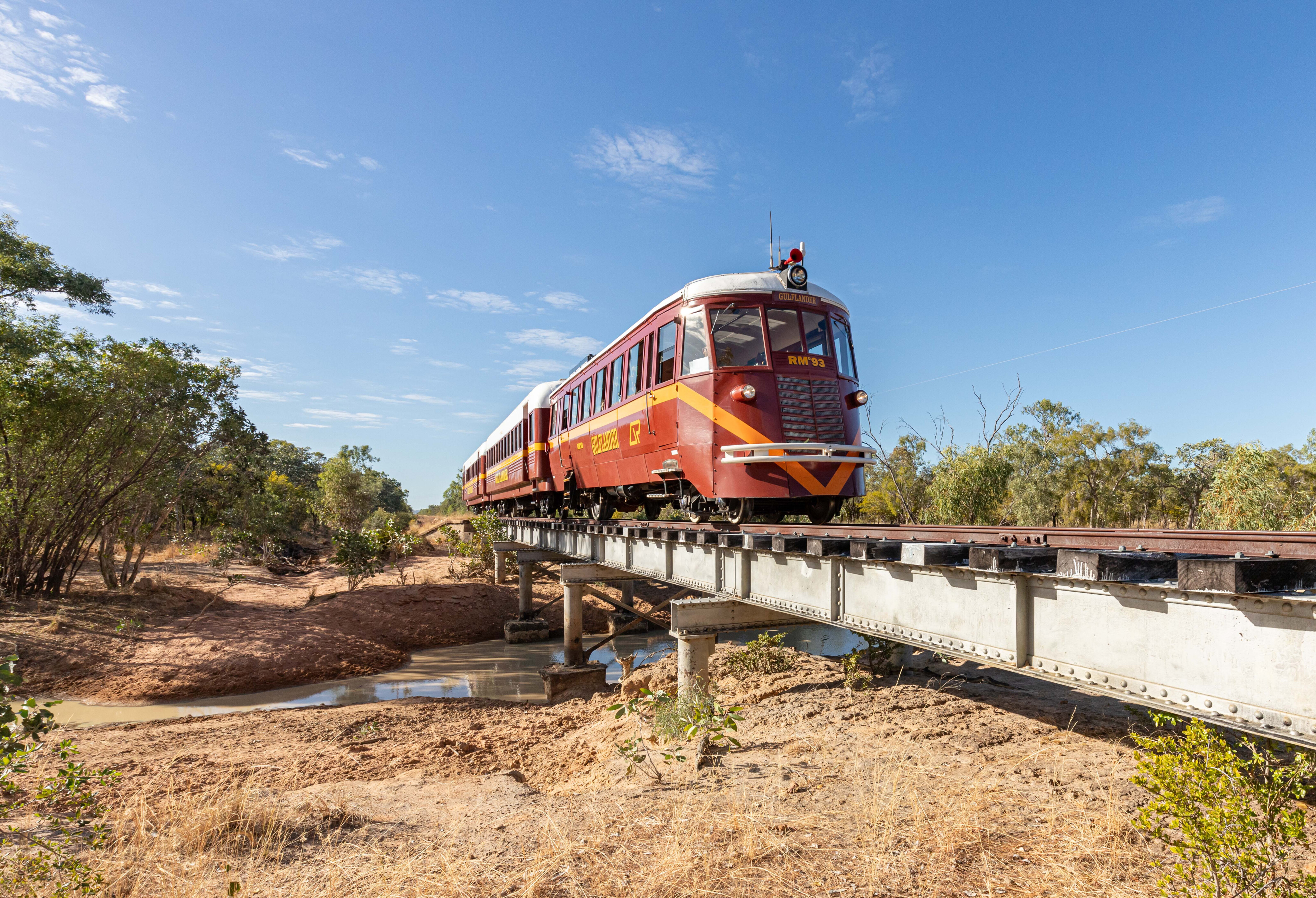
The historic Normanton station was constructed in 1889 and now houses a museum, store, tea room and ticket office.
You can ride the 1959 railmotor known as the ‘Tin Hare’ and there are three seasonal experiences available. The first is across the Savannah with a five-hour journey from Normanton to Croydon where you can stay at the historic Club Hotel before catching the return trip the following day.
The Gulflander stops at Blackbull for tea and cake, and it is a popular place to capture a photo or two of the historic train. The second experience is a two-hour return trip out to Critters Camp, and the third experience is the Golden Sunset Tour from Croydon which includes a hearty outback meal.
Check out the website at www.gulflander.com.au [↗] for more Gulflander information and tour bookings.
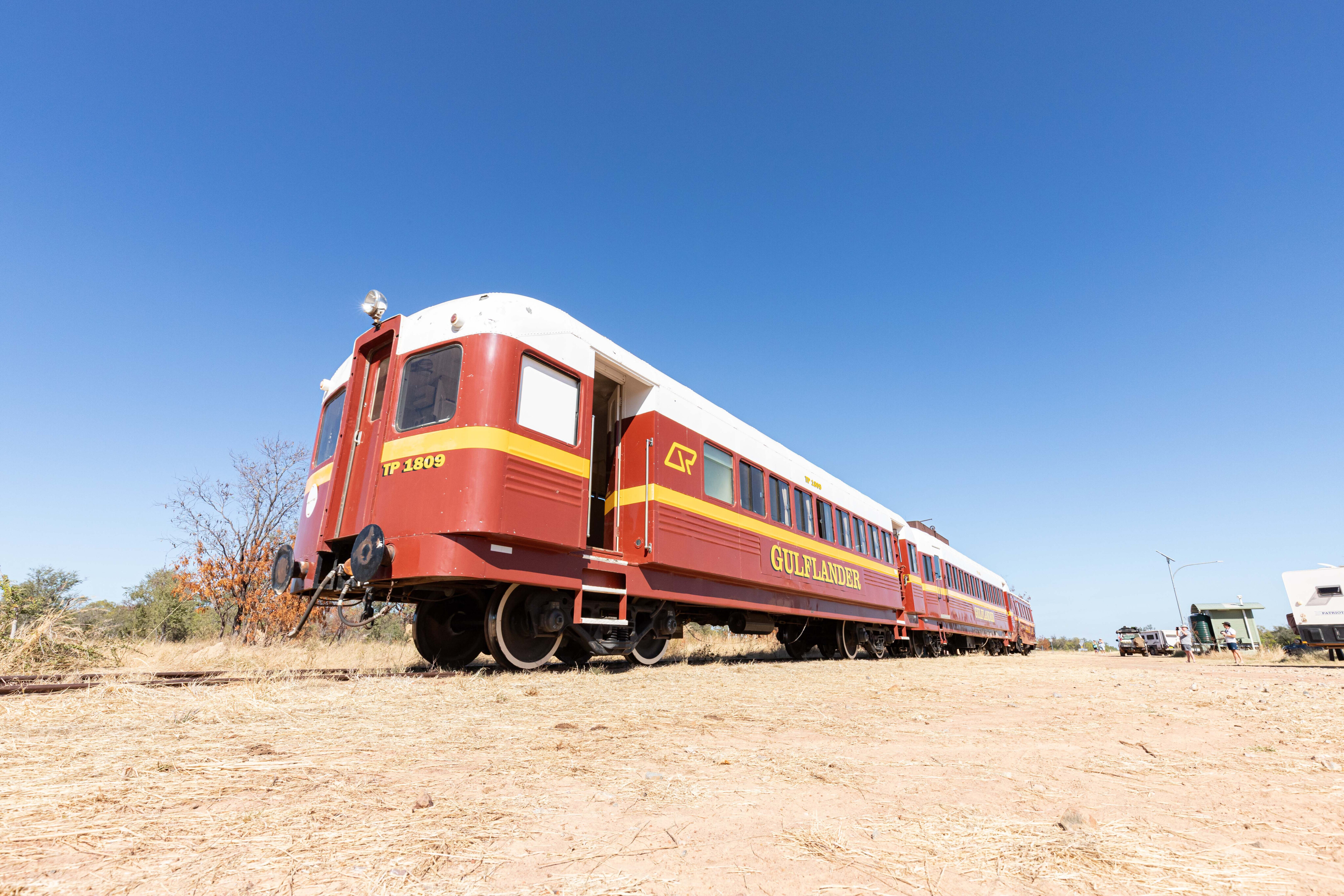
3. Norman River and Mutton Hole Wetlands
Normanton offers free camping alongside the Norman River with permits available from the Visitors Centre which must be picked up before you find a spot to set up.
Take care near the riverbanks as a 5m-long salty has been spotted here and that’s not something you’d want chasing you. The tracks that lead to the campsites are very dusty and if the wind is blowing in the wrong direction, your campsite could cop it whenever someone drives past.
There are a myriad of tracks that lead into the Mutton Hole Wetlands Conservation Park, a tropical savannah wildlife sanctuary. Take care as some can be boggy when wet and, when dry, the bulldust is ridiculous.
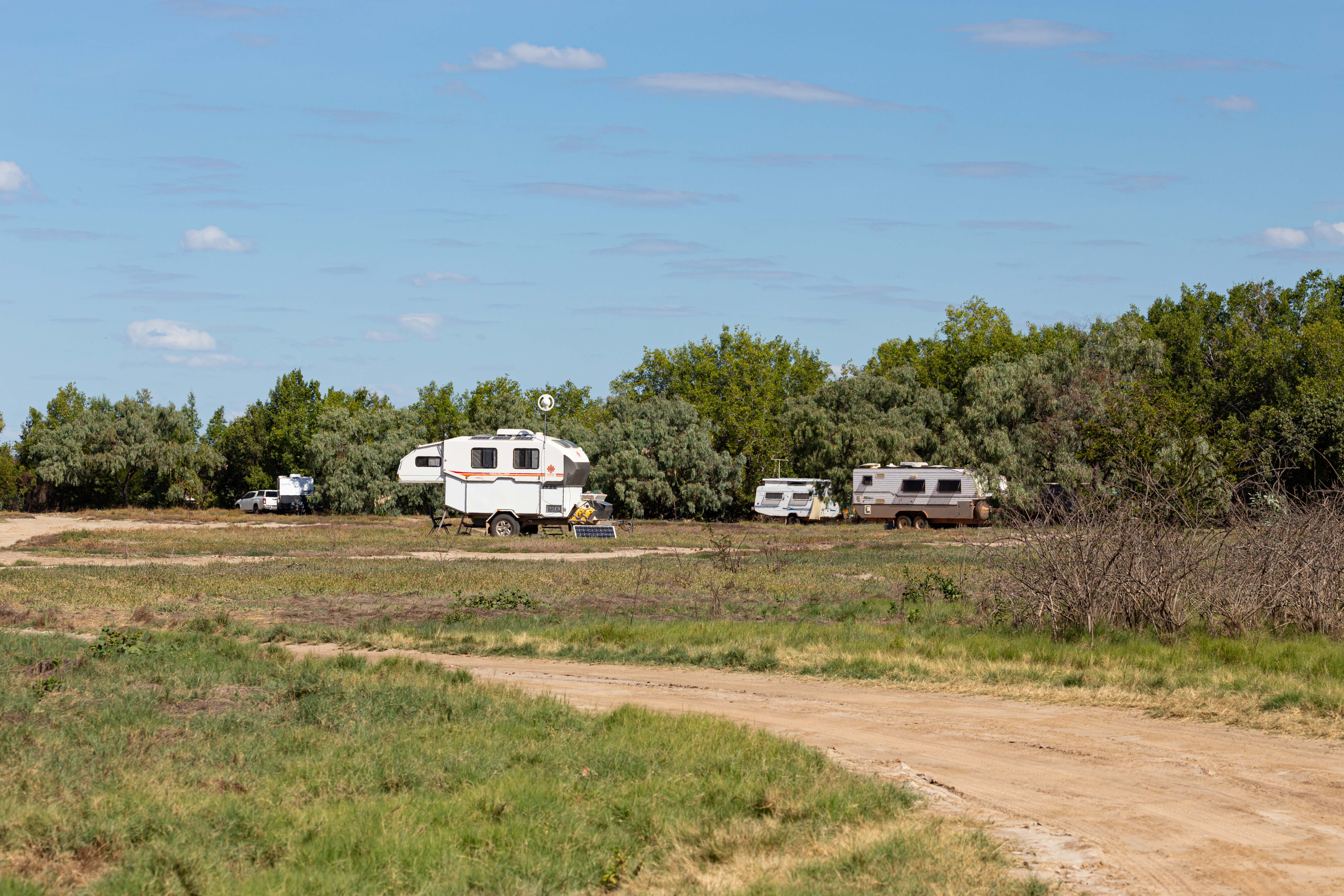
The Mutton Hole wetlands cover 7860ha and are part of the largest continuous wetland in northern Queensland, with fauna including more than 120 species of birds, fish and amphibians, wallabies, wild pigs and dingoes.
You are likely to spy brolgas, magpie geese, sarus cranes, Australian bustards, and great and little egrets. Saltwater crocodiles inhabit the wetlands and enjoy eating humans. Move away if you see one and remember they can run as fast as you can walk, but it isn’t worth trying to race them.
While canoeing is acceptable, it is precarious, and the locals call canoes ‘croc lures’.
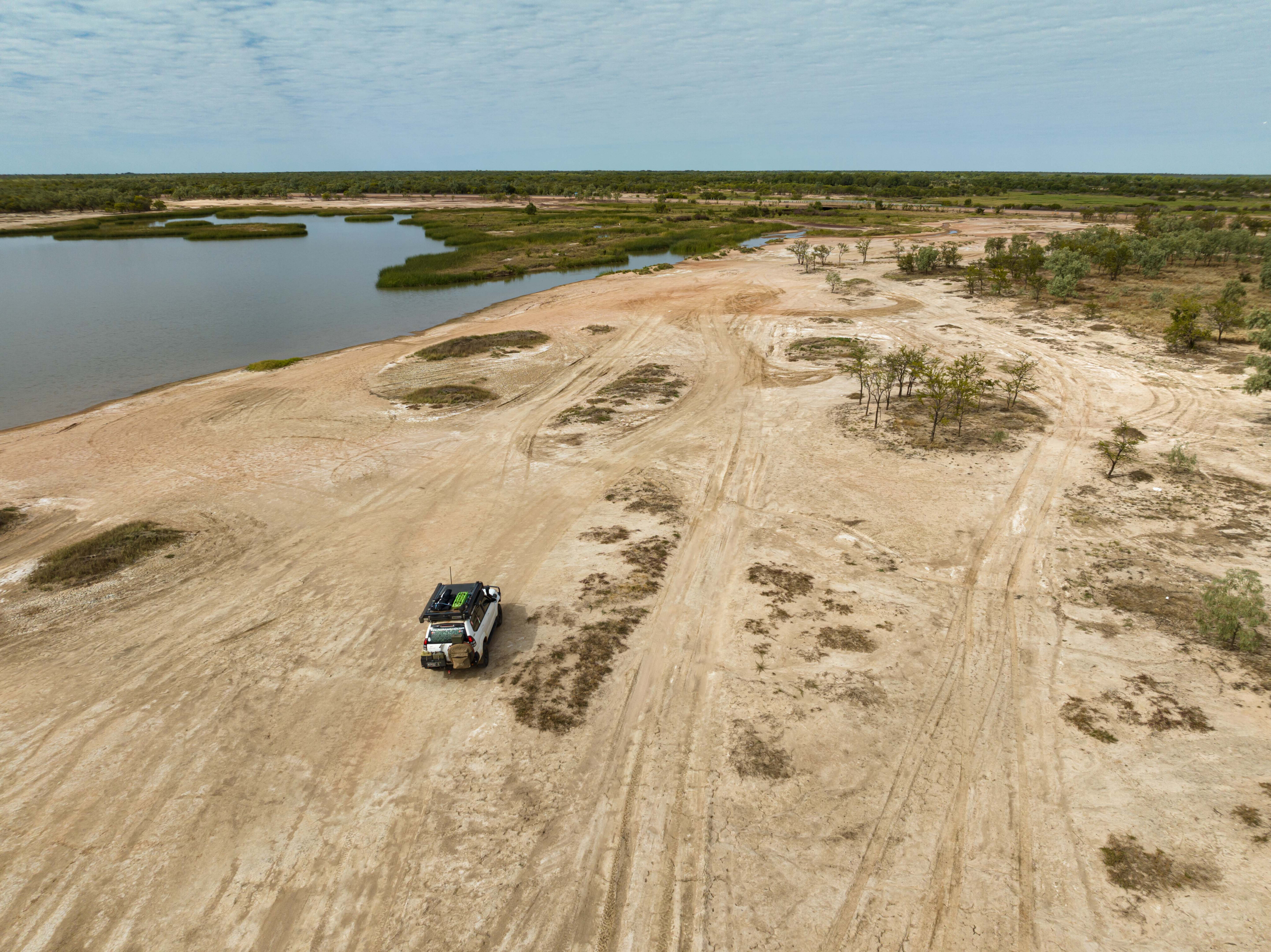
The Gkuthaarn and Kurtijar people have lived in the Normanton area and hunted across the wetlands for thousands of years, trapping fish in the shallows, holding ceremonies, and resolving disputes.
This changed in the mid-19th century when Normanton was established as a port town with coastal shipping skirting the wetlands journeys up the river to the old wharf near the bridge.
A meatworks operated near Goose Lagoon from the 1890s to early in the 20th century, mostly to slaughter cattle for tallow, which no doubt would have been attractive to the crocodiles. There are no traces of the meatworks these days.

4. Walk around town
The best way to learn more about historic Normanton is the town walk, and the best place to start is the Visitor Information Centre where you can check out the displays and pick up a town map.
There is also a magnificent display that showcases the resilience, spirit and sheer hard work of the indigenous men and women who played a vital role in the establishment of the cattle industry in the Gulf region. The informative and interactive display is free to view, and also highlights the skill of indigenous people as stock workers and on the rodeo circuit.
Krys the Crocodile is a life-size model of an estuarine crocodile that was killed by Krystina Pawlowski in July 1957. With one shot between the eyes, the giant beast was dragged onto the MacArthur Bank on the Norman River.
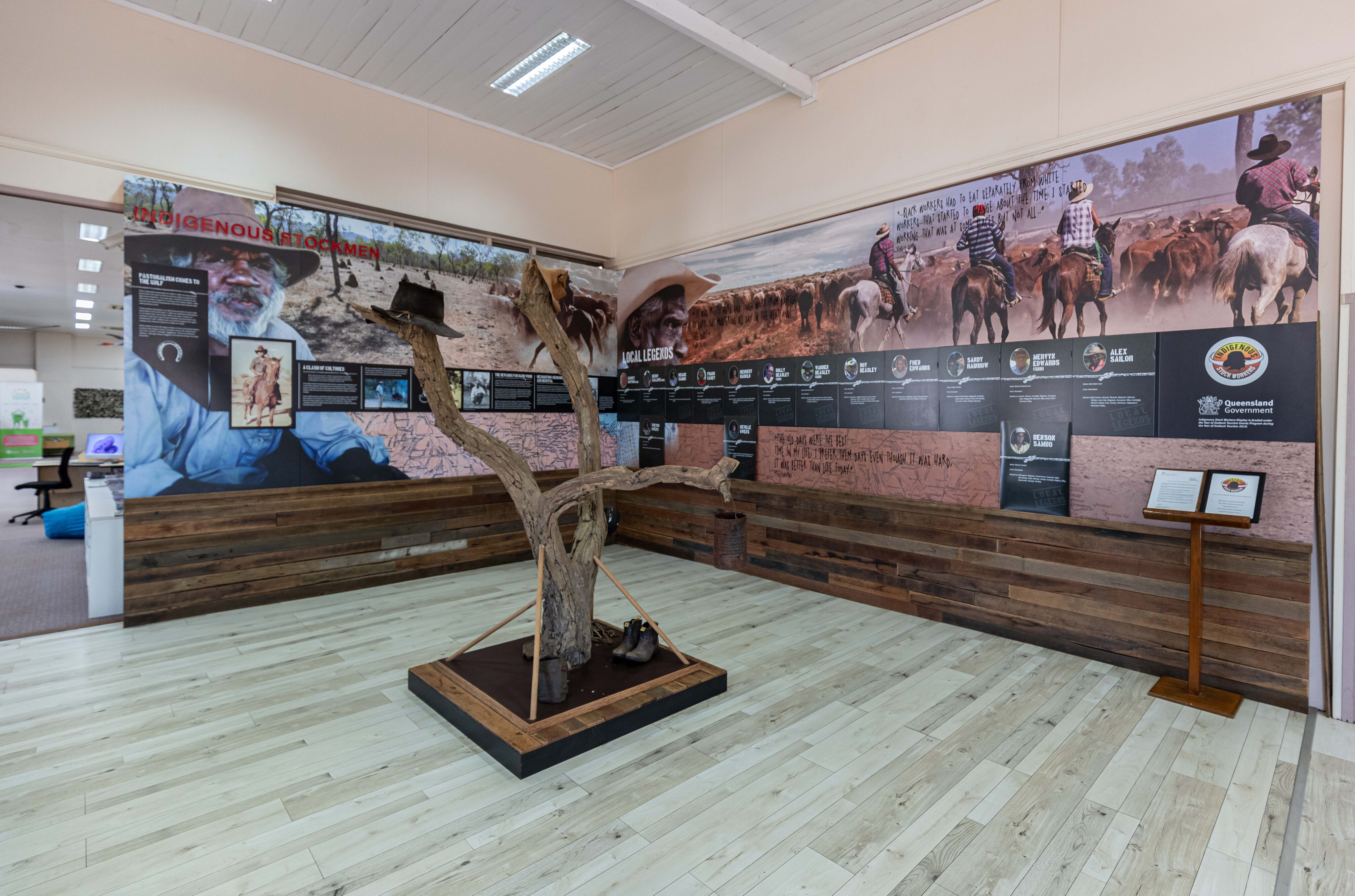
The crocodile measured 8.63m long, and ended up in the Guinness Book of Records as the largest crocodile ever shot.
Krystina and her husband Ron were professional crocodile hunters who later became advocates for protecting these ancient creatures. You’ll find Krys located near the corner of Landsborough and Haig Streets.
The Burns Philp warehouse is a stunning piece of architecture built in 1884 and is oldest surviving store of the company that dominated shipping and mercantile trading in Australia and the South Pacific from the late-19th century to the late 20th century.
In 189, the artesian bore located at the entrance to the Normanton Caravan Park was drilled into the Great Artesian Basin to a depth of 710m, and it supplied over one million litres per day at a temperature of 66°C.

The bore previously fed the town baths and still services the caravan park’s hot water supply, and supplements the town water supply.
The Bank of NSW (now Westpac) was opened for business in a tent on this site on 23 July 1884. The current building was built in 1886 and once served the Croydon goldfields and the thriving seaport economy of Normanton. You can check out two safes on display, the bank’s records and old scales used to weigh the Croydon gold.
There is also a self-guided walk around the heritage-listed Normanton station precinct. Explore the museum, vintage steam locomotives, wagons and carriages and the goods shed, the old station building and the gardens. The museum is home to a lot of memorabilia and artefacts that have been collected from the local area and along the railway track to Croydon.
And don’t forget to drop in at the three aforementioned hotels.
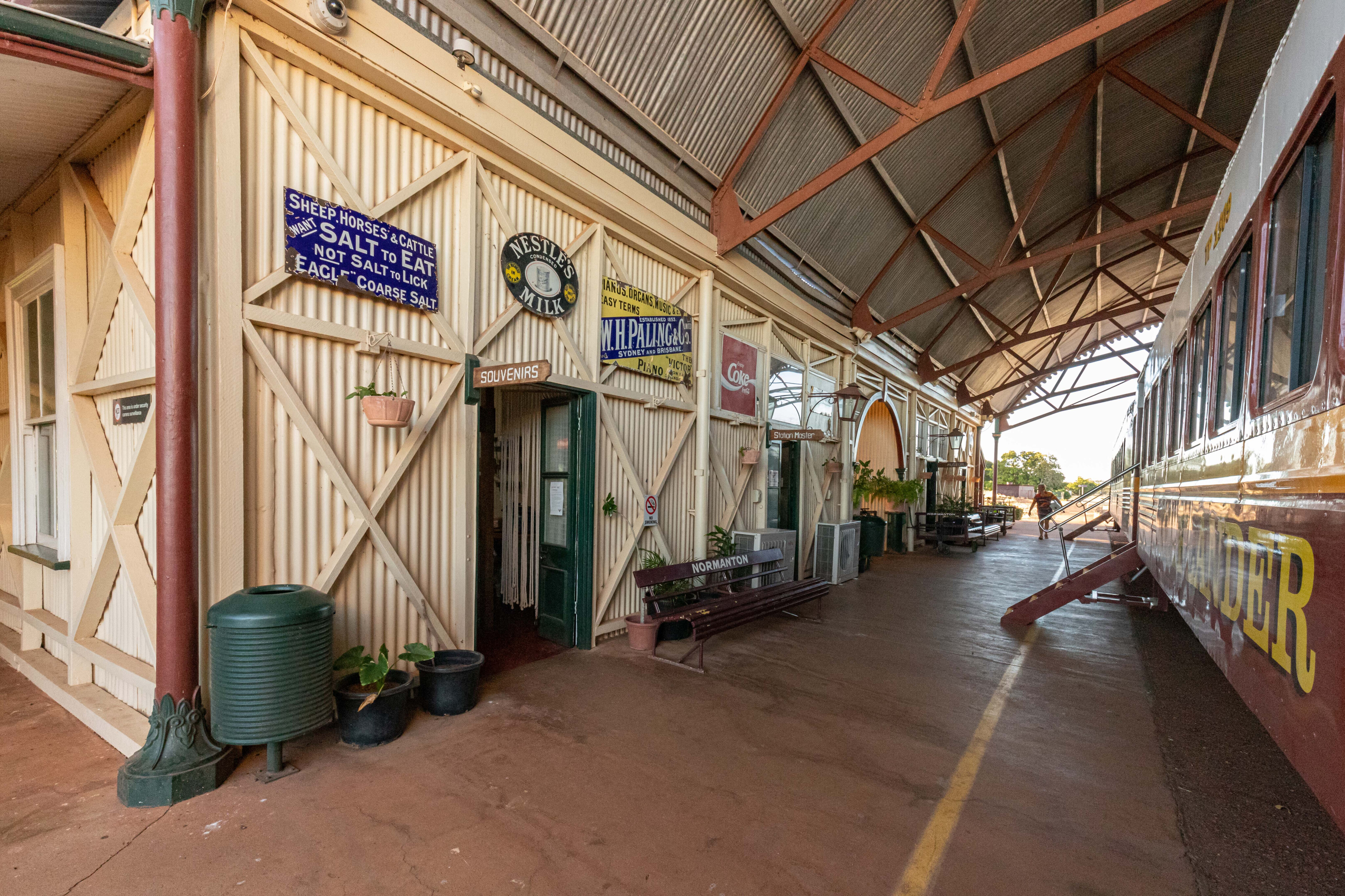
5. Explore Burke and Wills last camp
Camp 119 was the most northerly camp of the ill-fated Victorian Exploration Expedition led by Burke and Wills. The location of the camp is signposted 36km to the southwest of Normanton on the Burketown Normanton Road, with a 1.5km drive to the carpark.
A short walk leads to a set of storyboards that tell of the colonial rivalry between Victoria and South Australia in the quest to cross the continent from south to north, as well as highlighting the relief parties led by Alfred Howitt, John McKinlay and Fredrick Walker during 1861.
The storyboards tell how the four exhausted men of the Vurke and Wills party arrived here on Saturday 9 February 1861, before Burke and Wills themselves pushed on with their desperate dash north the next day in an attempt to reach the sea.
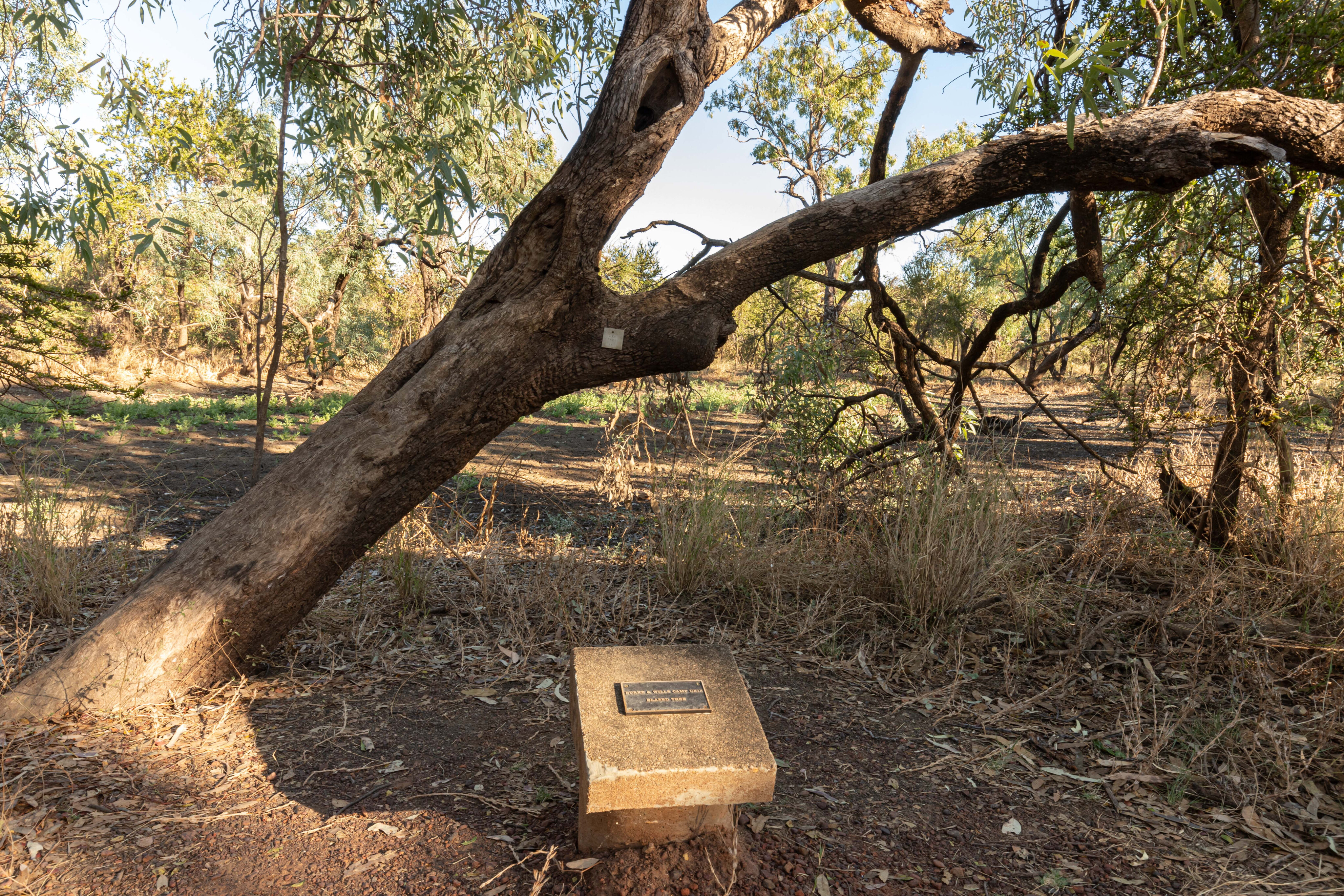
Sadly, as hard as they tried, the vast saltpans, boggy ground and mangroves threw up barriers preventing them from obtaining a view of the open ocean.
In the meantime, John King and Charles Gray marked no less than fifteen trees as proof that they’d reached northern Australia as well as burying a camp oven at the base of the tree marked ‘B CXIX’ that contained Wills’ mercury horizon (used in celestial navigation) and other material.
Returning to Camp 119 on Tuesday 12 February, the camp was abandoned the following day as the four men made their return journey towards Cooper Creek.
Fredrick Walker’s relief party discovered camel and human footprints near here in January 1862, before locating the abandoned Camp 119 shortly afterwards. Walker blazed a large tree that King and Gray had left untouched, while the buried camp over was not discovered until much later, before being lost again.
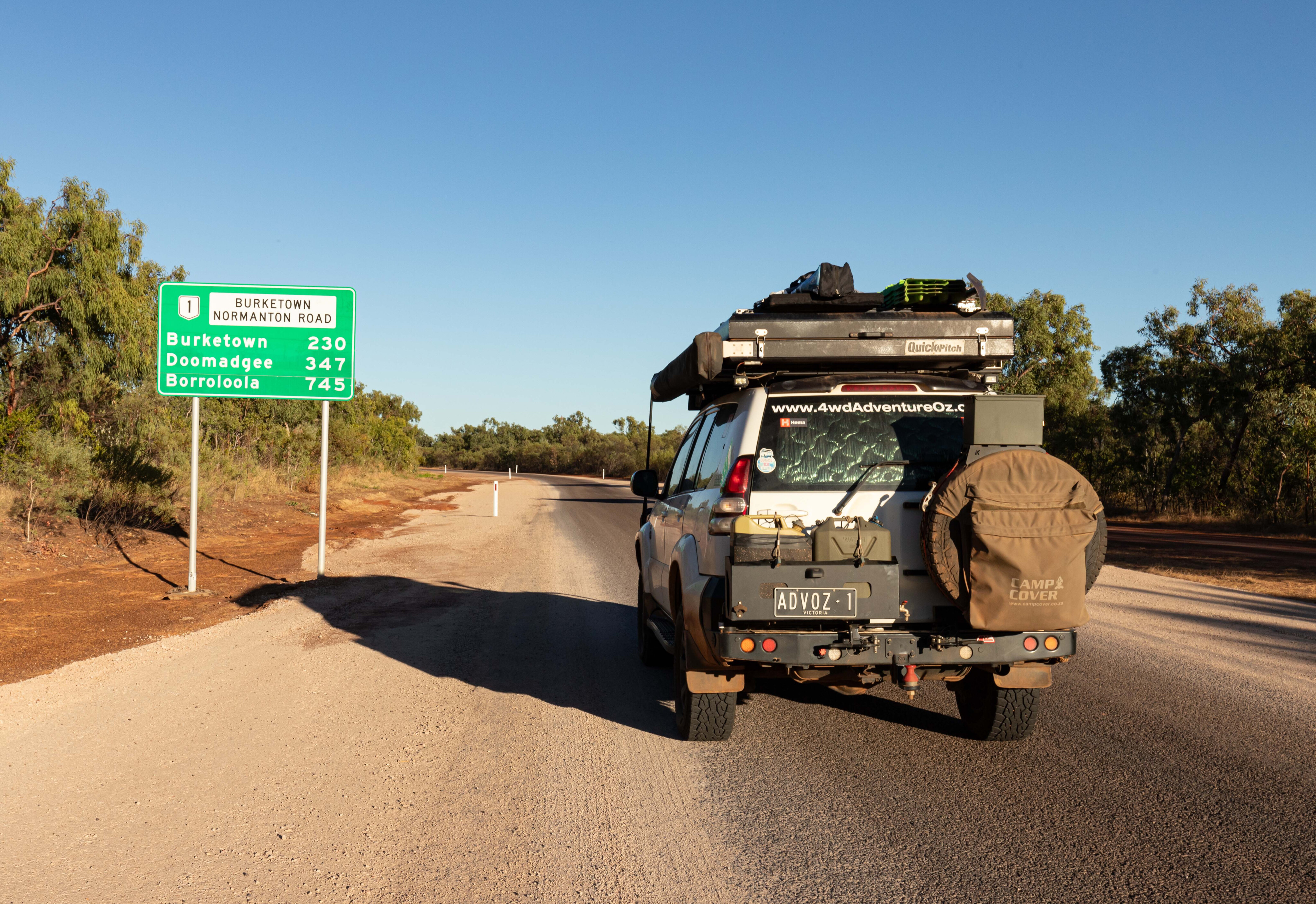
Where to stay
Purple Pub: www.purplepub.com.au [↗]
Central Hotel Motel: (07) 4745 1215
The Albion Hotel: https://www.facebook.com/albionnormanton/ [↗]
Normanton Tourist Park: www.normantontouristpark.com.au [↗]
Gulfland Motel and Caravan Park: https://www.discovercarpentaria.com.au/directory-record/139/gulfland-motel-caravan-park [↗]
Norman River Self-Contained RV Park: www.carpentaria.qld.gov.au/camping [↗]
Five more things
- Catch a barra on the Norman River
- Check out Leichhardt Falls
- Camp at Leichhardt Lagoon
- Join a fishing charter from Karumba
- Explore the Les Wilson Barramundi Discovery Centre in Karumba

COMMENTS